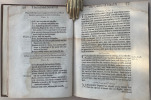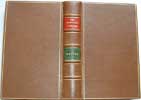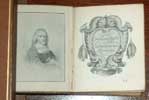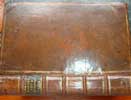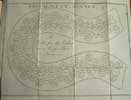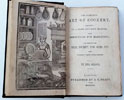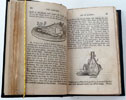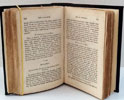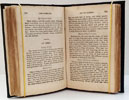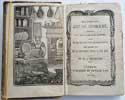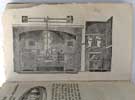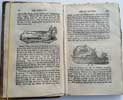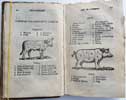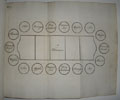The Carlton Hotel
One of Escoffier's Menus as well as a booklet with recipes for His sauces and two of Eugene Herbodeau's menus plus other Carlton Hotel Ephemera.
The Carlton Restaurant 'Carte du Jour' menu is dated 29th Avril 1908. It is slightly age-browned with ink inscriptions at the top describing some new dishes not featured on the menu. There are 2 dinner menu's from 4 Carlton Gardens dated 15 and 31st March, without a yearly date. Then two of Eugene Herbodeau's menus, the first for Xmas Dinner and a separate blue invitation card to New Years Reveillon. The second menu is a very rare special Luncheon with Anna Pavlova as main guest. Also enclosed is a recipe booklet with the original blue covers almost detached. It has Escoffier's name and the Carlton Hotel 'coat of arms' embossed in slightly faded gilt on the front cover. It is titled 'A Few Recipes'. It has a title page. p 1 Introduction. p 3-7 Preface. p 8-40 Recipes. p 41-42 Advertisements for Escoffier Sauces. p 43-44 Advertisement for 'A Guide to Modern Cookery'. p 45-47 Index. [1] There is a blue water stain in the top corner of all pages, not affecting the text. Also a finely designed folded card advertising the 25th Anniversary of the Carlton Hotel, very beautifully decorated in silver with blue leaves and a border of fruit; It has three finely drawn vignettes of the Hotel, the Restaurant and the Palm Room. Also enclosed is a b/w photograph of Escoffier and Eugene Herbodeau and another b/w photograph of the Carlton Hotel, circa 1910. All housed in an specially made clam-shell box bound in half mid-tan calf with tan cloth boards. The spine with raised bands and gilt lettering.
- Auguste Escoffier's tenure at the Carlton lasted from 1899 - 1819. His Carte du Jour menu is dated 1908. The two menus from 4 Carlton Gardens, which was the residence of Lord Balfour (Ex-Prime Minister) are believed to be Escoffier's. This cannot be proven, but the menus were a part of a large amount of purely Escoffier ephemera that this compiler purchased. The recipe booklet and four page advertisement sheet features products and recipes promoting 'Escoffier's Sauces' that were produced and sold by his company - 'Escoffier (1907) Ltd' at 6 Ridgemont Street, Tottenham Court Road, London. Mons. Eugene Herbodeau was a one-time protege of Escoffier's and also his literary executor. Together with Paul Thalamas he wrote and published a history and biography of his great mentor. He was commis Chef Poissonier under Escoffier at the Carlton in 1913. He also became Chef de Cuisine at the Carlton Hotel after Escoffier retired in 1819. In the black and white photograph, Escoffier is quite old and in civilian clothes. Herbodeau is in a Chefs uniform. As Escoffier passed away in 1935 we can assume this photograph was taken at the Carlton Hotel sometime before his death. An interesting footnote to Escoffier’s time at the Carlton, concerns the future President of North Vietnam, Ho Chi Minh [HCM]. Before becoming President he worked in the hotel kitchens from 1913 to 1917. He was waiting quietly in London for events to unfold, secretly hoping the conflict in the colonial regime in Indochina would lead to its collapse. When HCM started his job in the spring of 1913, he was part of the kitchen washing and cleaning team. For the staff, it was not unusual to see wealthy and famous clients leaving a lot of food on their plates after their meals. Whenever HCM saw a large chunk of beefsteak or a large piece of chicken untouched, he would transfer them to a clean plate and send them back to the kitchen. One time Escoffier asked HCM, “Why didn’t you throw these into the bins like others do?” HCM answered, “These things shouldn’t be thrown away. You could give them to the poor.” Escoffier was amused and pleased, “My dear young friend, please listen to me! Leave your revolutionary ideas aside for now, and I will teach you the art of cooking, which will bring you a lot of money. Do you agree?” Shortly after this conversation, HCM was promoted to the pastry and cake section, and Escoffier taught him the art of fine French desserts. He followed the grand chef’s instructions diligently, and with a keen interest. On French pastries, especially the pâte brisé, HCM mastered the skill very quickly. Escoffier had pioneered the techniques on how to mix the ingredients, how to handle the dough, and the key steps in the baking process that would produce a light, fluffy, and crispy crust. From the beginning, HCM’s mentor had noticed his unusual intelligence, and he always appreciated HCMs thoughtfulness and polite manners. Escoffier had no doubt that HCM (one of his favourite chefs) could have had a promising career ahead of him in the world of French haute cuisine. The Carlton Hotel was in its time one of, if not the most famous hotel in the world. Unfortunately it existed for only forty years. It opened in 1899 and was completely destroyed by Nazi Germany during the London Blitz in early 1940, after 57 consecutive nights of air raids ordered by Hitler. Any ephemera and menus from Escoffier's and Herbodeau's time working there are extremely scarce, and to have this varied and unique collection is quite rare.



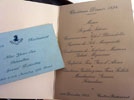
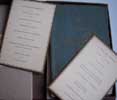
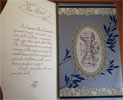
click on image to enlarge

Modern category
ref number:
11064 




